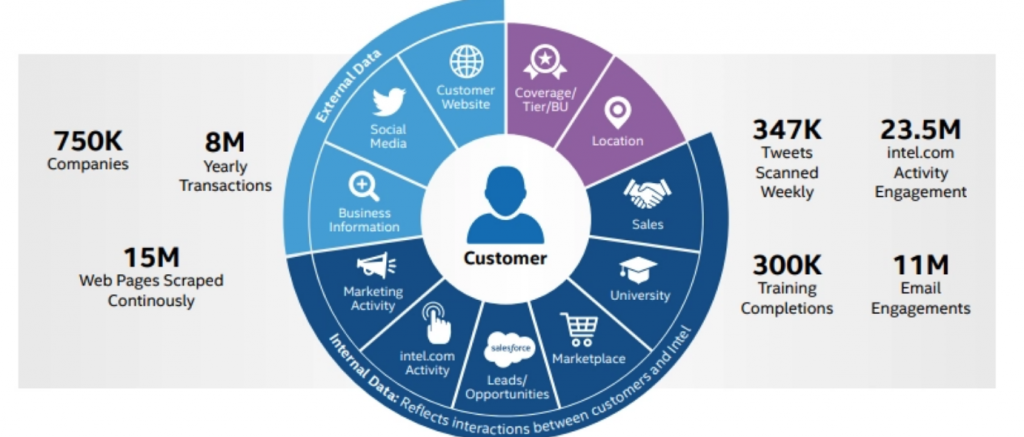
The Intel sales AI Sense module extracts an enormous amount of data.
Intel’s AI Platforms Boost Chip Sales, Leading to Billions in Profit, Investment
With the tech news sources claiming that manufacturers are facing a shortage of computer chips, it seems Intel has heard the message and has ramped up production in a big way.
Intel today announced it will spend $3.5 billion to upgrade its factory in New Mexico as part of a plan to expand domestic manufacturing investments.
Intel is also planning to spend $10 billion on a new factory in Israel and has already said it will spend $20 billion to build two new factories in Arizona. Intel CEO Pat Gelsinger noted in the 60 Minutes interview that the U.S. had about 37% of the worldwide chip production about 25 years ago, but that percentage has sunk to 12% today. And while there were once 25 major companies making leading-edge chips based on the best manufacturing processes, today only three are doing so: Intel, Taiwan’s TSMC, and Samsung. And therein lies the problem with chip shortages.
However, Intel is forging ahead with AI helping its sales force. Venturebeat.com reporter Kyle Wiggers found that AI has helped to make Intel a leader in sales.
Jake Tatel, global director of sales enablement and productivity at Intel, told VentureBeat that Intel started its AI marketing tech journey about five years ago. The company’s analytics teams started collecting a wide range of data from prospect websites and social media accounts. Then they combined it with Intel’s own website activity and overlaid it with customer buying patterns to drive actionable insights.
“Our internal team has really challenged itself to look at use cases where we could utilize data that we’re able to amass from customer buying patterns, in addition to how potential buyers are engaging across all our properties — whether that be the website, our training properties, or other Intel-owned channels,” Tatel said. “While tapping the data we have internally is a key part of the equation, it was also important for us to weave it together with publicly available information, like prospect websites and social media data. We have a complex ecosystem, so it was critical for us to take a wide view of it all to figure out the best way to stitch it together for continuous, real-time scanning.”
Sales vs. Shortages
So if there is a chips shortage, how is Intel able to boost its bottom line with tens of millions in new sales? Branching out in its product base and using AI to refine its sales force. Two applications sprang from the analytics team’s early work: “Sales Assist” and “Autonomous Sales.”
Intel created Sales Assist in 2017, built on the company’s broader Sales AI platform. Sales AI — which is made up of the modules Sense, Reason, Interact, and Learn — is designed to collect and interpret customer and ecosystem data and translate it into useful recommendations.
Together, Tatel says that the applications are generating “significant” business value for Intel, with the incremental contribution of Sales Assist estimated to be greater than $100 million per year. Autonomous Sales is helping to create $30 million in new sales, he says. And in 2020, Sales Assist and Autonomous Sales together delivered more than $168 million.
Sales AI, or Autonomous Sales employs a number of web-mining techniques to collect data. Leveraging natural language processing (NLP), the platform identifies cross-reference information about products, brands, advertisements, verticals, and other key variables. It then extracts data about the industries in which the customer is operating, such as automotive, communications, or health care. Thanks to pre-trained language models including BERT and GloVe, Sales AI can understand the customer’s role (e.g., manufacturer, integrator, or reseller) and the technologies it’s using, according to Tatel.
“We’re combining the ‘human intelligence; of our sales team with the AI in a unique way,” Tatel said. “For example, Sales Assist can now spot when a customer has a product that’s end-of-life and can recommend an alternative product for a salesperson to suggest to the customer to aid in their transition or make sure they have the latest and greatest solution.”
Using AI to guide its efforts has succeeded in increasing sales for Intel, but many other companies of various products and services are going all-in on using AI for streamlining operations and boosting profits. Imagine UPS or FedEx trying to manually figure out their daily routes for deliveries. The information in Wigger’s article is detailed but easy to understand. The links to both venturebeat.com articles production upgrades and AI-driven sales are below.
read more at venturebeat.com







Leave A Comment